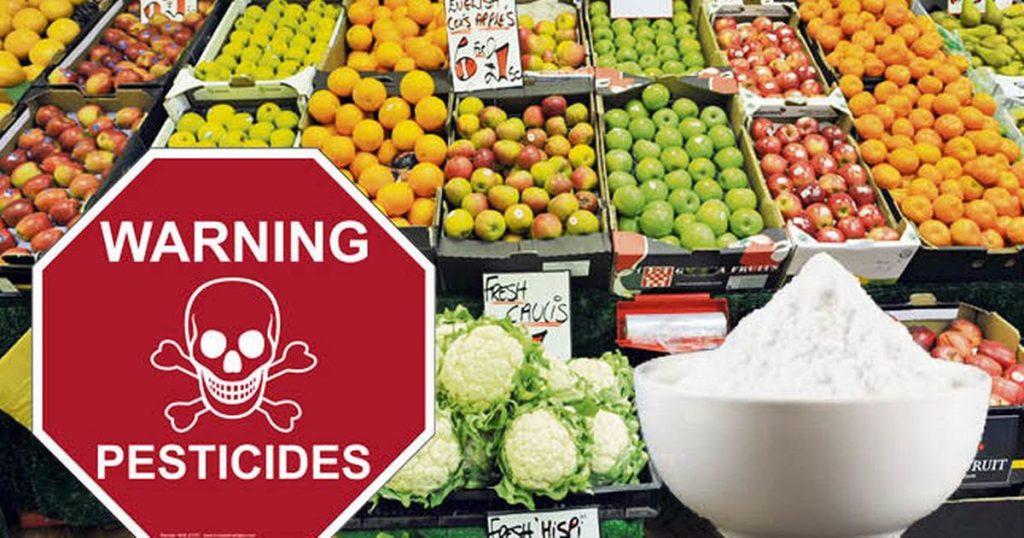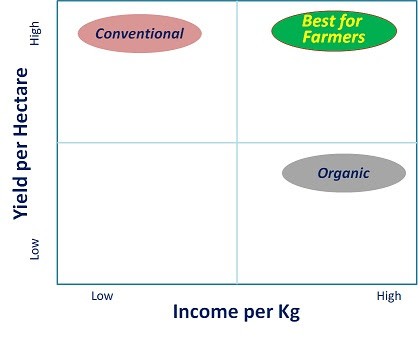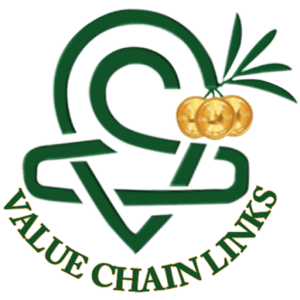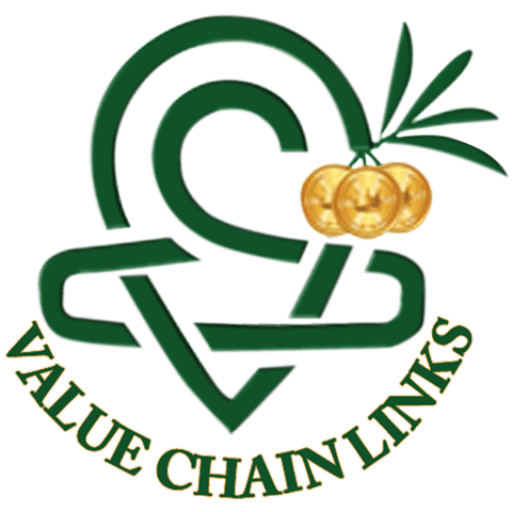WHAT IS THE MISSING FRESH FRUITS CATEGORY?

BY DR. NIMROD

| *This article tackles general problems common to the Agri-sector in rising economies. |
| FROM CHILDHOOD TO THE MILITARY My father was a farmer, so I grew up in an agricultural environment among farmers. In my earliest memories, I am in the orchards or going to the orchards with my father. After graduating from high school, I volunteered for a year of work in agriculture (at Kibbutz Kadarim). After that, I continued to do my army service in the IDF (note, in Israel, military service is mandatory). |

CHEMICAL WARFARE IN MY ORCHARDS
In 1988, the Iran-Iraq war ended, and in the same year, I returned to my kibbutz, where I started working in the orchards, as a pest control officer, and part time in the Kibbutz kindergarten.
Being in charge of crop protection, I carefully read the labels of each pesticide before spraying. It filled me with terror; I saw how similar those pesticides are to the Iranian and Iraqi armies’ chemical weapons..

It seemed inconceivable to spray poisons into the air, soil, leaves, and fruits, which we eat later.
I thought to myself, “my wish is to make a living from growing and selling healthy, delicious fruits. How can it be beneficial if I am poisoning the environment and the fruits?
Is it possible that the overall health effect of eating my fruits is negative?
How is it going to affect my health, the health of the other workers, the health of those who live near the orchards, the biological balance in my orchards, the health of the children in the kindergarten, and that of consumers?“
Deep in my heart, I knew the answer, and I didn’t like it. It didn’t make sense!
There must be another way, a healthier way to produce fruits, and protecting them from pests, without endangering, in the process, people and the environment’s health.
THE TWO QUESTIONS
Two issues, two questions, kept popping up; (1) how do I reduce the negative effect of pesticide sprays, and (2) how do I improve my agri-business economy?
At that time, my orchards were composed of 5% organic and 95% conventional cultivation. It helped me to notice several differences between the two regimes:
Organic – (1) low yield per hectare, (2) fewer pesticide sprays (compared to the conventional), and (3) high price per kg of produce.
Conventional – (1) high yield per hectare, (2) many pesticide sprays, (3) low price per kg of produce.

It was clear that from the farmer’s point of view, the preferred combination is; high yield per hectare and high price per kg. That’s it, and nothing else matters.
If you ask, ‘what about the pesticide sprays?’ Most farmers do not like spraying, but they got so much used to it that they view it as a necessity, and without question, will keep on spraying, believing it is doing good to their livelihood.
I was confused with the answers I received, so I kept digging and asking myself, “why are people ready to pay more for organic produce?”
My answer was straightforward; when they buy organic produce, they do not buy Fruits; they buy Healthy Fruits (healthy to people and the environment), which is entirely different from buying Fruits.
I said to myself, “Strange, I spray both, organic and conventional (each according to its standards). Yet, the public perceives the organic healthier, and hence, is willing to pay a considerable additional amount for that (Health) difference.”
FARMERS
I wish to be exact; from my experience, given there is an available pesticide-spray solution, both organic and conventional practices will spray it to prevent damage.
Many consumers who buy organic produce believe it is “not sprayed,” while in reality, “it is sprayed.” Hence, the main difference is the number of sprays.
At this point, I realized that there is a fundamental failure in the concept of plant protection in agriculture.
In practice, organic farmers accepted the perception that poison spraying is a reasonable thing to do. Hence, they focused on the issue of the source of the poison; natural or synthetic.
I was not too fond of both regimes (organic and conventional). In my mind, the best war is the one you never fought, and the best pesticide is the one you never sprayed.
I was looking for a zero-spray crop protection solution. One that is effective enough to suit 95% of farmers, the conventional farmers’ demands.
Once having a Zero-Spray Crop Protection Solution, the differences between organic and conventional agriculture will be minimal, mainly focused on the organic downside of low yield per hectare.
IMAGINE what it would be like if conventional farmers, constituting 95% of all farmers, would stop spray pesticides. WOW, consumers would love it, and so will our blue planet and future generations.
Once again, I am stuck with two critical questions, although more focused; (1) how do we convince conventional farmers to stop spraying, and (2) what alternative to sprays do we offer?
I was sure about one thing; farmers will spray less or even stop spraying as soon as it pays off in their pockets.
CONSUMERS
Let’s make it clear; consumers do not want their fruits or vegetables with some or even little chemical residues.
They even don’t want it with chemical residues ‘according to MRL’ (maximum residue level). Consumers wish to have NO CHEMICALS in their food. Period.

Consumers want produce that wasn’t sprayed at all – ZERO SPRAY. Since such fruits are not available yet, they purchase organic, having FEWER SPRAYS, which is the closest thing to ZERO SPRAYS.
Do you see what I saw?
Consumers care less about ORGANIC or CONVENTIONAL, and care more about their produce safety, SPRAYED versus NOT SPRAYED.
THE ENLIGHTENMENT
Now that I understood better what consumers want, I had this ‘discovery,’ and I said to myself, “This calls for action and to create a new fresh produce category whose focus is the number of sprays! In this new category, Zero Sprays is the best there is“.
In other words, the emphasis of this category is differentiation through spray reduction, regardless of whether the spray is organic, conventional, formed from plants, minerals, fungi, bacteria, viruses, synthetic, etc.
Farmers following this method will spray far less than conventional or organic farmers. We will signal consumers about the added value delivered by labeling and branding it under a different category, which we call Green Valley Fruits.
CONSUMERS’ FRESH FRUITS NEW QUALITY CATEGORY
To make a ‘smart purchase,’ consumers need to know how to distinguish between produce grown according to Conventional, Organic, or Green Valley standards.
To help consumers distinguish between the three categories, fruits produced under the Green Valley package and comply with its protocol will carry the unique Green Valley label.
 |
Rewarding farmers that are ‘doing the right thing’ is the way to ensure they will continue spraying less and less for their benefit and a better tomorrow.
Consumers can reward Green Valley farmers by giving preference to produce labeled with the Green Valley label and agree to pay a small premium to support the extra efforts.
What is “less spraying?”
I think that a 90% insecticide sprays reduction is a tough and challenging target to achieve. Hence, a farmer who wishes to enter the Green Valley program should present its excellence by execution such a reduction.
Furthermore, farmers practicing the Green Valley method should strive to continue improvement.
Green Valley stands for Zero Sprays Attitude, but also for other things that align with the brand values. For example, enhance social awareness to farmers’ communities and their livelihood, expansion of Green Valley farms’ activities to improve all aspects of sustainability, health, and the state of the environment, which may be directly or indirectly affected by its action.
IS IT POSSIBLE TO REDUCE 90% OF THE SPRAYS?
The orchards where I worked suffered from countless pests, including; aphids, scales, mites, cicadas, trips, beetles, nematodes, moths, fruit flies, and more.
At that time, even if you were to wake me up in the middle of the night, I would immediately tell you which of them is the most significant because it was very easy – fruit flies!

Why fruit flies? To count a few reasons –
* Damage – fruit flies cause a high infestation level. In Africa and Asia, 50% to 80% fruit fly infestation is not an unusual sight.
* Number of sprays for fruit flies control –often over 50% of the total insecticide sprays, and in some cases 100%.
* Carried during the fruiting season and even during harvest.
* Fruit fly sprays disturb the biological balance, creating the need for additional sprays against other pests.
In short, it was clear to me that without the cessation of fruit fly sprays, the goal of fruit labeling, as Green Valley Fruits would not be achieved.
After many years as a fruit grower and a crop protection officer, I knew for sure that at the current time, there is no effective non-spraying fruit fly control solution.
So what do I do? Is this the end of my dreams and hopes?
No solution?
I was sure that if I only work hard and smart enough, I could develop such a solution.
DOUBLE EFFORT
It was clear to me; the goal of healthier and environmentally friendly agriculture is entirely dependent on the ability to have an effective non-spraying solution for fruit fly control. That is the only way we can get farmers to stop or reduce sprays.
If such a solution does not exist, then I see it as a call for me to bring, or should I say, to develop such a solution.
Simple, isn’t it?
The goal I set for myself was as simple and straightforward – reduction of 100% from the sprays against fruit flies and 99% from the infestations (relative to the initial condition).
Why 100%? Because fruit flies are so hard to control, I choose them as a “model pest” to deliver the message, “if we can do it with fruit flies, we can do it with any other pest!“
How had I done it?
I decide to embark on a (life) journey in two tracks, in parallel –
One – Academic studies and basic theoretical research. This track took me 15 years and led me to a Ph.D. in fruit fly meta-population ecology. I didn’t know at the time how helpful it will become in my future.
Second – Developing an alternative, cost-effective technology that will enable the control of fruit flies without the need for sprays. This led me, 16 years ago, to found Biofeed company.
FREEDOME
Time passed by, and after tens of thousands of formulas and models, lab trials, field trials, countless failures, and disappointments, finally, in 2014, we started to see the positive, promising results.
In 2015, Biofeed won the Grand Challenges Israel competition.
The target was to develop a non-spraying control solution for the most problematic fruit fly in the world (Bactrocera dorsalis), which will enable saving 50% of fruit fly sprays and reduce fruit infestation by half, from its current 50%-80% fruit damage.

Finally, in 2017, there was a breakthrough, and I was able to see the impossible taking place.
The results were stunning! We managed to reduce sprays by 100% and fruit infestation by 95% to 99%.
No one before or after achieved such field results. NO ONE!
But that was not all. A year later (2018), we completed an additional development, this time for African fruit growers and a different fruit flies complex.
The African farmers suffer the same magnitude of fruit damage from fruit flies (50%-80%) as their Indian colleagues. Once again, no one before or after achieved such field results. NO ONE!
This time sprays were reduced by 100%, but the fruit infestation was reduced by over 99% compared to the commercial spraying regime. Once again, no one before or after achieved such field results. NO ONE!
Biofeed named the novel fruit fly solution, which is made to free farmers from the burden of spraying – FreeDome.
FRUIT FLIES ARE NO LONGER A PROBLEM
My dream was to reduce fruit flies sprays by 90% while keeping fruit damage as it is with sprays (which we considered to be the best).
Reality turns out to be far better – a 100% reduction of sprays and 99% less infestation. The pursuit of eliminating the fruit flies sprays and damage was victorious.
The unprecedented results came from the combination of applying the novel concept, technologies, practices, process, and methods under a unify fruit fly control protocol, called – Fruit Fly Certified Trade Zone (FFCTZ).
Biofeed applied that protocol in Asia and Africa, in small and big-scale farms, during the dry season and rainy season, with varied varieties, having different fruit flies’ complex, etc.
Still, no matter where and when, the results were persistence – 100% fewer sprays and 99% less infestation.
But those are the technology implementation result. The benefit farmers received from reducing sprays by 100% and fruit fly infestation by 99% was clear and tangible – the produce was at Export Quality.
Finally, farmers can sell their mangoes in the best markets for the best price and improve their livelihood.
In four years working in Africa and Asia, we never, NOT ONCE, had to use any fruit fly sprays. Yet, the average fruit fly infestation is down by 99% versus sprayed orchards.
Do you understand the meaning of it? Can you see how this can become a turning point for millions of farmers and the agro-industry across Africa and Asia?
I was fortunate to work with many mango growers who sprayed nothing but fruit flies’ insecticides; now, they can stop spraying. Zero Insecticide Sprays.
FOLLOWING A LONG TERM VISION
Biofeed’s vision is simple, “A world where people enjoy longer and healthier lives, thanks to healthier food, grown in a healthy sound environment.”
The way we can fulfill our vision is by having farmers adopting sustainable crop protection techniques and protocols.
Farmers will follow advanced protocols and take the risk of changing practices and crop protection regimes if they see the benefit they can get out of it.
The Green Valley, new fruit category, will encourage farmers to stop spraying by giving them economic incentives.
This is how we can align consumers’ interests with those of the farmers, hence create a win-win deal across the value chain to promise a better tomorrow for all.
The Green Valley model has been field-tested and implemented by farmers.
It proved to be resilient and prosperous while still flexible enough to contain the many differences between farms, farmers, pests, climate, etc.

NEXT
At the current stage, Green Valley operations will continue focusing on mango growers in emerging markets, especially in Africa and Asia.
This focus is a natural result of understanding the unique business opportunities created in those markets in recent years.
We will continue to advance our activities in light of our long-term vision, which sets values, people, health, and the environment before business.
Biofeed through Green Valley initiative is committed to deal with the challenges our society and world are facing, to make it a better place for all.
Green Valley is one of a kind, like never seen before. If you want to impact your market, your community, or our world, you should consider doing it through Green Valley.

